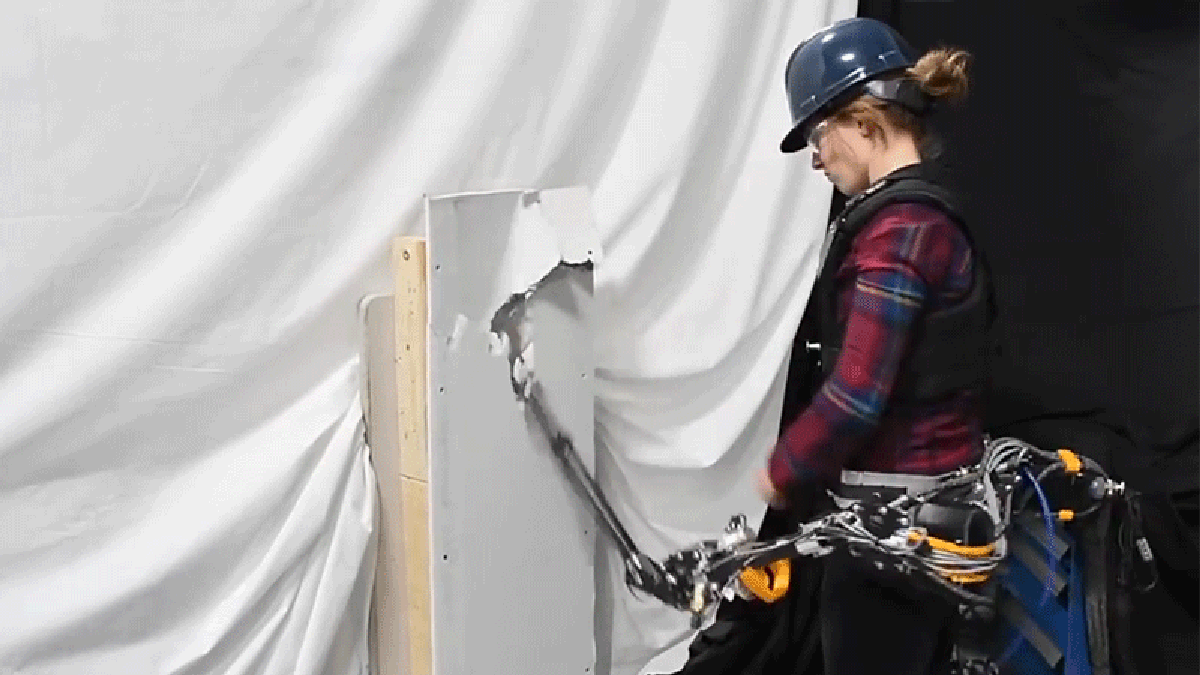This Wall-Smashing Wearable Robot Arm Is Also the Perfect Social Distancing Tool - 3 minutes read
 Gif : Createk Engineering Lab ( YouTube
Gif : Createk Engineering Lab ( YouTubeBefore autonomous robots completely replace humans in the workplace, we’re going to see a hybrid approach where workers augmented with extra robotic limbs will work safer, easier, and faster. I n the case of this robotic third arm that can smash through walls, these upgrades will potentially also be an effective way to keep others a safe distance away during the coronavirus pandemic.
Advertisement
Created by researchers from the Université de Sherbrooke in Quebec, Canada, the robotic arm is strapped to the wearer’s waist using a rather industrial- looking belt. It weighs around eight to nine pounds, which is roughly the equivalent of a real human arm , but that’s because the hydraulic systems that power it are housed in a separate box that connects to the arm through cables and hoses. Housing the power system remotely makes t he arm much lighter , but the approach limits mobility, so don’t expect the hardware to bring your supervillain fantasies to life .
There’s another trade-off to the arm, at least in its current form: I t’s not autonomous yet. It lacks the necessary sensors to analyze the world around it or the objects it’s supposed to interact with. I nstead of the wearer controlling it, or the arm mirroring the wearer’s motions, a second person controls it using a small replica of the arm, often called a waldo. Requiring a second person to help complete jobs the extra robot arm is supposed to streamline is counterproductive, but eventually, using tools like AI, it could operate all on its own, or intelligently take cues from the wearer.
Advertisement
What it lacks in mobility and autonomy, the robotic third arm makes up for with speed, agility, and strength. It’s nimble enough to pick fruit off a tree, or swing a badminton racket with enough accuracy to return a shuttlecock, and it’s strong enough to lift at least 11 pounds. T he end of the arm can swing at 3.4 meters per second. That’s more than enough to smash through drywall, or leave someone with a broken nose if they get too close. To ensure that never happens to the wearer, the robotic arm’s movements are mechanically limited, but it’s also designed with joints that reduce the force exerted when they hit something, as an extra safety precaution.
We’ve already seen technologies like this implemented in places where repetitive work poses injury risks to workers, such as the EksoVest exoskeleton suits that Ford designed for assembly line staff. This isn’t quite as refined yet, but it does have the potential to boost productivity without putting employees on an accelerated path to overwork or burnout.
Source: Gizmodo.com
Powered by NewsAPI.org